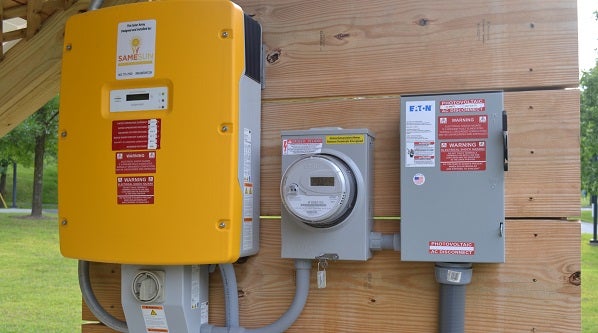A new option for energy needs in Massachusetts: non-wires alternatives


When it comes to upgrading the energy grid, most of America follows a familiar script. The utility company detects a need in its service area for more energy infrastructure. This could be a new power plant, a substation, or more transmission wires. It submits a request to the state’s energy regulatory commission. The commission approves the request. The infrastructure gets built. The cost of this is passed along to ratepayers in the form of higher energy bills.
If a new proposal in Massachusetts becomes law, new infrastructure construction will shift from being the default option to the last resort for grid upgrades. “Non-wires” alternatives such as energy efficiency, demand response, energy storage, and the emerging technology of microgrids will be prioritized over adding more utility infrastructure. Microgrids, of course, do utilize wires, but they are considered a “non-wires” alternative because they can operate, if necessary, independently of the main grid. Therefore, they represent an alternate to upgrading the grid as a whole.
The genesis of the plan was a report, released in September by the state’s Department of Energy Resources (DOER), recommending that the state install 600 MW of energy storage. The proposed state grid modernization bill (H. 1725 / S. 1875), sponsored by Rep. Jennifer Benson (D) and Sen. Marc Pacheco (D), would “reset” a proceeding now before the state Department of Public Utilities (DPU), in order to create financial incentives for utilities to pursue grid modernization. It would also require an independent assessment of local energy resources to deal with system needs, as opposed to traditional utility infrastructure upgrades.
If the legislation – which is now before the legislature’s Joint Committee on Telecommunications, Utilities and Energy and is expected to be voted on in the fall – becomes law, utilities would competitively acquire non-wires alternatives, as well as take other steps to promote distributed energy. The premise is that non-wires alternatives can lower total energy use and rationalize energy, thereby lowering grid costs for all ratepayers. The existing DPU order didn’t create the necessary financial incentives to compensate the utilities for taking such a different approach; the bill would require a new order from the DPU to rectify this.
“Microgrids can and should play a larger role in the Commonwealth’s energy system,” said Peter Shattuck, Massachusetts Director for the Acadia Center and Co-chair of ACES (Advancing Commonwealth Energy Storage. “A number of initiatives are already underway to support different microgrid applications, from the Mass Clean Energy Center’s Community Microgrids Program to the $40m Department of Energy Resources Community Energy Resiliency Program, to independent efforts by municipal utilities such as Sterling to develop a solar plus storage microgrid.”
The shifting of priorities away from wired infrastructure to non-wires alternatives has encountered predictable resistance by utilities in Massachusetts. Shattuck, however, believes that a “misalignment of incentives” has dissuaded utilities in Massachusetts from fully embracing the non-wires option. He cites an Acadia Center document that compares the financial returns to utilities for traditional infrastructure expenditures with the much smaller returns they receive for developing local energy resources. According to this article, the bill would allow the utilities to become eligible for incentives and for pre-authorization for spending on grid modernization. Pre-authorization is important because it lessens the risk that regulators might deny utilities the ability to recover costs after their investment has been made.
The proposed bill also includes several innovative concepts. One of these is the use of “hosting maps”. The bill obligates utilities to identify opportunities for non-wires alternatives. “Hosting maps would show the locations on the grid where more distributed generation could be located without requiring expensive upgrades, which would reduce interconnection costs and delays,” Shattuck said. “[They] could also be used to guide deployment of distributed energy resources toward areas in need of either additional generation or load relief.”
Another concept that the bill introduces is a seven-member Grid Modernization Consumer Board. “This proposal is based on the successful Energy Efficiency Advisory Council,” Shattuck said, “a diverse and inclusive stakeholder body that represents key constituencies ranging from business, to low income, to environmental voices, and has provided the public confidence to ramp up Massachusetts’ national leading energy efficiency programs to $1 billion annual investment levels.” The proposed Grid Modernization Consumer Board would have representatives from the state government, advocates for the environment, and a representative from each of the business, technology and consumer constituencies.
Another possible result of the new bill, if passed, would be the removal of solar net metering caps.
“Solar net metering caps are holding back development in certain parts of the state, and the viability of the state’s new SMART solar incentive program has yet to be demonstrated,” Shattuck said. “Additionally, under legislation passed last session, DPU and utilities have been provided with mechanisms to address any [possible] costs shifts – which have yet to be demonstrated. In light of these two factors, we anticipate increasing pressure to remove or at least lift the net metering caps to avoid stifling Massachusetts’ success with solar to date.”
